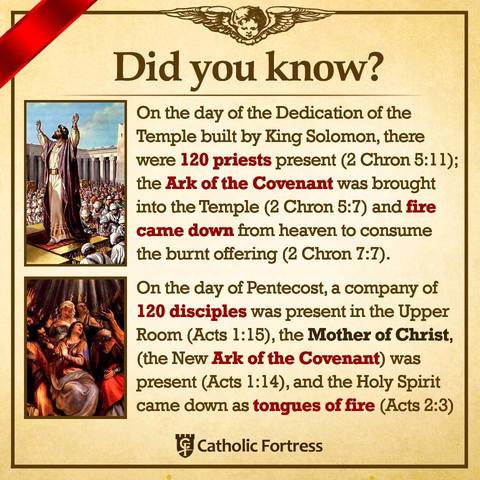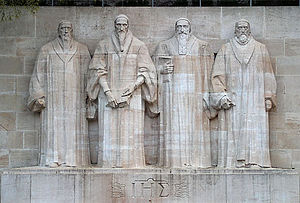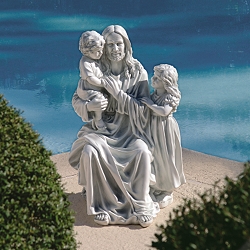Worship of God Via Natural Images (vs. Jim Drickamer)
The words of Reformed Baptist elder Jim Drickamer will be in italics.
Some of our Protestant brethren (mainly Calvinists but some other denominations as well) have an almost obsessive fear of any image associated with worship at all, thinking that all such manifestations are examples of idolatry and undue exaltation of a “graven image”.
Fear of true idolatry potentially being present is absolutely prudent, as that is a serious sin. An irrational, almost obsessive fear (often exhibited by those of the Reformed persuasion) of every image necessarily being 1) a graven image, and 2) idolatrous in terms of how it is being viewed and used by Catholics, is unreasonable. Usually critiques of same result from incorrect premises and an inadequate understanding of the Catholic rationale for such things. This particular article was not about man-made images, but about images in nature that represented God, by God’s own statements and revelations of Himself.
Exodus 20: 4-5
One must not make a mere man-made item a replacement for God (idolatry).
“This has led some fanatical elements to oppose even crucifixes and statues of Christ as idols. In other words, all images whatsoever are collapsed in this wrongheaded mentality into the category of the “graven image” in the Ten Commandments.”\
I would contend that very few people are so stupid as to think that a wooden crucifix or plaster statue of Christ is Christ Himself, and to be worshiped. They are simply devotional aids, just as virtually all Christians would accept painted portraits of Jesus as pious items that help us reflect on our wonderful Lord and Savior and what He has done for us, making it possible to be saved from our sins and go to heaven one day.
“But the Bible doesn’t take this view at all...Exodus 33:8-10 Note that the pillar of cloud is:
1) a creation (water, if a literal cloud;
2) visual, hence an image; and
3) thought to directly represent God Himself.
This...is about the prohibition of any images associated with God and worship: not just man-made ones. It’s a larger, more all-encompassing subject matter, directed to those opposed to any and all religious images in worship, whether man-made or natural. The biblical texts provided decisively refute this silly view, in my opinion. This passage...is precisely and perfectly relevant to my subject matter. I deal with man-made religious objects in these two papers:
Bible on Physical Objects as Aids in Worship
Crucifixes: Abominable Idols or Devotional Aids?
Exodus 33:8-10 Drickamer: This verse also says that when the people saw the cloud, they would rise up and worship. It does not, however, say they would worship the cloud, the image. So the cloud is not a forbidden image.
They were worshiping God, with the cloud as a direct visual image of Him or “representative” of Him being right there in the location where the cloud was. Of course it’s not forbidden. It’s in the Bible. So it wipes out the most extreme iconoclastic position: extending to all images whatever: even natural ones.
It’s also a supernatural manifestation, which is a major difference compared to any true idol made by the hands of men; but that would make no difference for those who mistakenly hold that any image whatsoever associated with God is impermissible. The problem comes when God Himself expressly sanctions such images, and worship in conjunction with them, as here.
But the issue is not whether an image is associated with God. It depends on how the image is associated with God. In the image of the cloud, it is associated with God, because He is the Creator of the image. No man made it. This is permissible according to the commandment. On the other hand, if an image is associated with God, because a man made it in a likeness which reminds him of God, then it would be forbidden. A man made it.
So you contend that there can be no such thing as a legitimate statue of Christ or a crucifix? They must necessarily be idols? If so, I think it’s beyond silly, as is the whole iconoclastic heresy that the Church condemned many centuries ago. Those are the direct images of God in play. They’re not idols, nor are they themselves worshiped; they are devotional aids to help concentrate one’s mind on God.
The same iconoclasts (opposers of images) have to explain away things like the burning bush (Ex 3:2-6), which is not only fire, but also called an “angel of the Lord” (Ex 3:2), yet also “God” (3:4, 6, 11, 13-16, 18; 4:5, 7-8) and “the LORD” (3:7, 16, 18; 4:2, 4-6, 10-11, 14) interchangeably. An angel is a creation (as is fire and cloud); yet God chose to use a created being and inanimate objects to visibly represent Him. Several similar instances occur in the Old Testament.
These are more, very poor examples. The burning bush was not man made nor was it worshipped. It is not prohibited. An angel is not man made, but at times when men did worship angels, as in Revelation 22: 8-9, they were told to stop and only worship God. Thus, Dave, you have not yet provided an example of a man made image that God permitted men to worship.
Of course I haven’t, because it wasn’t the purpose of my paper, which you seem unable to grasp. I dealt with the man-made images in the two papers (links) I cited above...
2 Chronicles 7:1-4
They bowed down to the fire, precisely because it represented God. If it didn’t represent Him, then they would be committing idolatry (worshiping fire as God). But the text makes clear that their actions were good and permissible.
I think the bottom line deals with worship. The worship of an image is sinful. It should not be done. This would include images of Christ. An image of Christ should not be worshipped. Instead, Christ should be worshipped.
That’s exactly what we Catholics do: we worship Christ: through images at times.
The commandment from Exodus 20 prohibits making an image. I worry about splitting hairs. If I have an image I did not make, is that permissible? I would be concerned with images particularly in the sanctuary of a church. It seems to me that having images in a place of worship might lead people inadvertently to think they should worship them. At the very least, I think the church leaders should make it clear to everyone that worshipping the idols is forbidden.
. . . which the Catholic Church has always done. Everyone understands that these are visual aids to devotion to God...
see Worship of God Via Natural Images (vs. Jim Drickamer) for full text
I agree. I am very much reformed, and I still wear a cross I received as a gift from my grandmother before she passed. It is not only a constant reminder of how much she loves me, but of the sacrifice Christ made for me.




